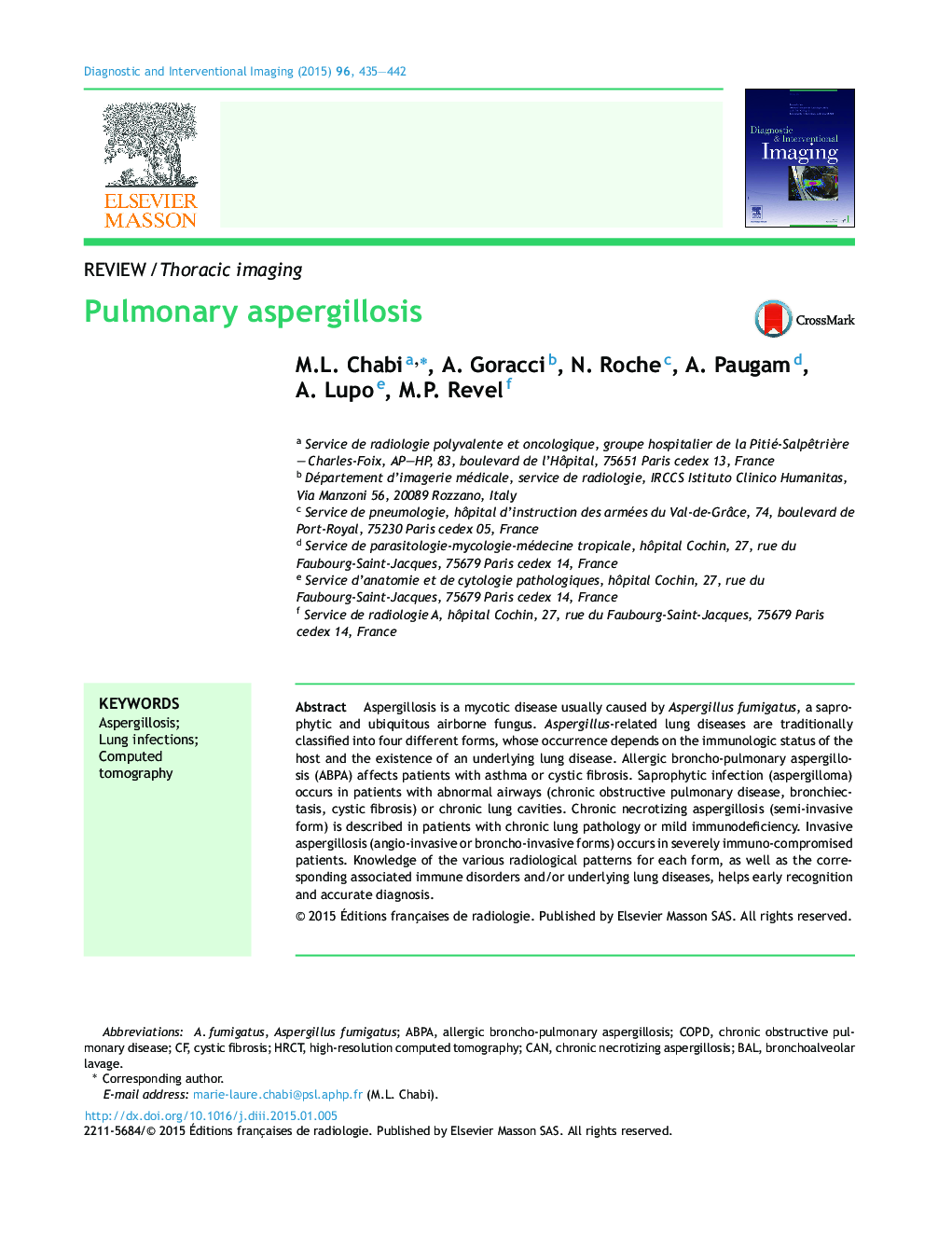| Article ID | Journal | Published Year | Pages | File Type |
|---|---|---|---|---|
| 2732759 | Diagnostic and Interventional Imaging | 2015 | 8 Pages |
Aspergillosis is a mycotic disease usually caused by Aspergillus fumigatus, a saprophytic and ubiquitous airborne fungus. Aspergillus-related lung diseases are traditionally classified into four different forms, whose occurrence depends on the immunologic status of the host and the existence of an underlying lung disease. Allergic broncho-pulmonary aspergillosis (ABPA) affects patients with asthma or cystic fibrosis. Saprophytic infection (aspergilloma) occurs in patients with abnormal airways (chronic obstructive pulmonary disease, bronchiectasis, cystic fibrosis) or chronic lung cavities. Chronic necrotizing aspergillosis (semi-invasive form) is described in patients with chronic lung pathology or mild immunodeficiency. Invasive aspergillosis (angio-invasive or broncho-invasive forms) occurs in severely immuno-compromised patients. Knowledge of the various radiological patterns for each form, as well as the corresponding associated immune disorders and/or underlying lung diseases, helps early recognition and accurate diagnosis.
